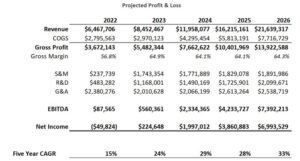By Tim Cheatham, Project Management Specialist
Western Growers Assurance Trust (WGAT) recently introduced the WGAT Healthcare Concierge powered by Rightway, a groundbreaking service designed to revolutionize the healthcare experience for WGAT members. There are many reasons behind the development of this service and why we chose Rightway Healthcare as our trusted partner.
According to The Patient Experience (PX) Revolution in Healthcare study by Talkdesk Research, 78 percent of patients believe engaging with healthcare systems through their preferred channels is crucial. In response, WGAT recognized the need to enhance patient experiences, empowering members to manage their healthcare effectively.
After rigorous evaluation, we carefully chose Rightway Healthcare as the ideal partner for the WGAT Healthcare Concierge. Rightway is a leading healthcare navigation and advocacy platform that seamlessly blends technology and a human-centered approach to transform patient interactions with healthcare.
The WGAT Healthcare Concierge brings a multitude of benefits and features to enhance the healthcare experience of our members. With Rightway’s user-friendly platform, members enjoy simplified healthcare navigation and personalized guidance in finding the right providers and treatment options, helping them make more informed decisions when it comes to their health. The dedicated care team, consisting of U.S.-based healthcare experts, provides comprehensive support throughout a member’s healthcare journey. Whether it’s scheduling appointments, reviewing medical bills, seeking second opinions or accessing telehealth services, the care navigators ensure that members receive the care they deserve.
To make the healthcare experience even more convenient, the WGAT Healthcare Concierge offers a seamless digital experience. Through the user-friendly mobile app and web portal, members can easily access their medical plan information, communicate with their dedicated care team and receive personalized recommendations. The power is at the member’s fingertips, allowing them to take control of their healthcare journey anytime, anywhere.
We understand the burden of healthcare costs, which is why the WGAT Healthcare Concierge incorporates tools to help members make cost-effective decisions. By comparing prices for services, members can identify cost-effective options, saving them money and reducing financial stress.
WGAT’s commitment lies in providing a healthcare experience that caters to our members’ needs and preferences. The WGAT Healthcare Concierge powered by Rightway offers a unique opportunity to enhance patient engagement, simplify healthcare navigation and make better decisions about healthcare costs.
With the WGAT Healthcare Concierge powered by Rightway Healthcare, Western Growers Assurance Trust is here to support you in your journey toward improved health and well-being.
If you currently do not have a WGAT plan and would like to learn more about how we can assist you in managing your healthcare costs, we encourage you to contact Western Growers Insurance Services. Our dedicated sales team members are available at (800) 333-4WGA to provide you with the information you need.

